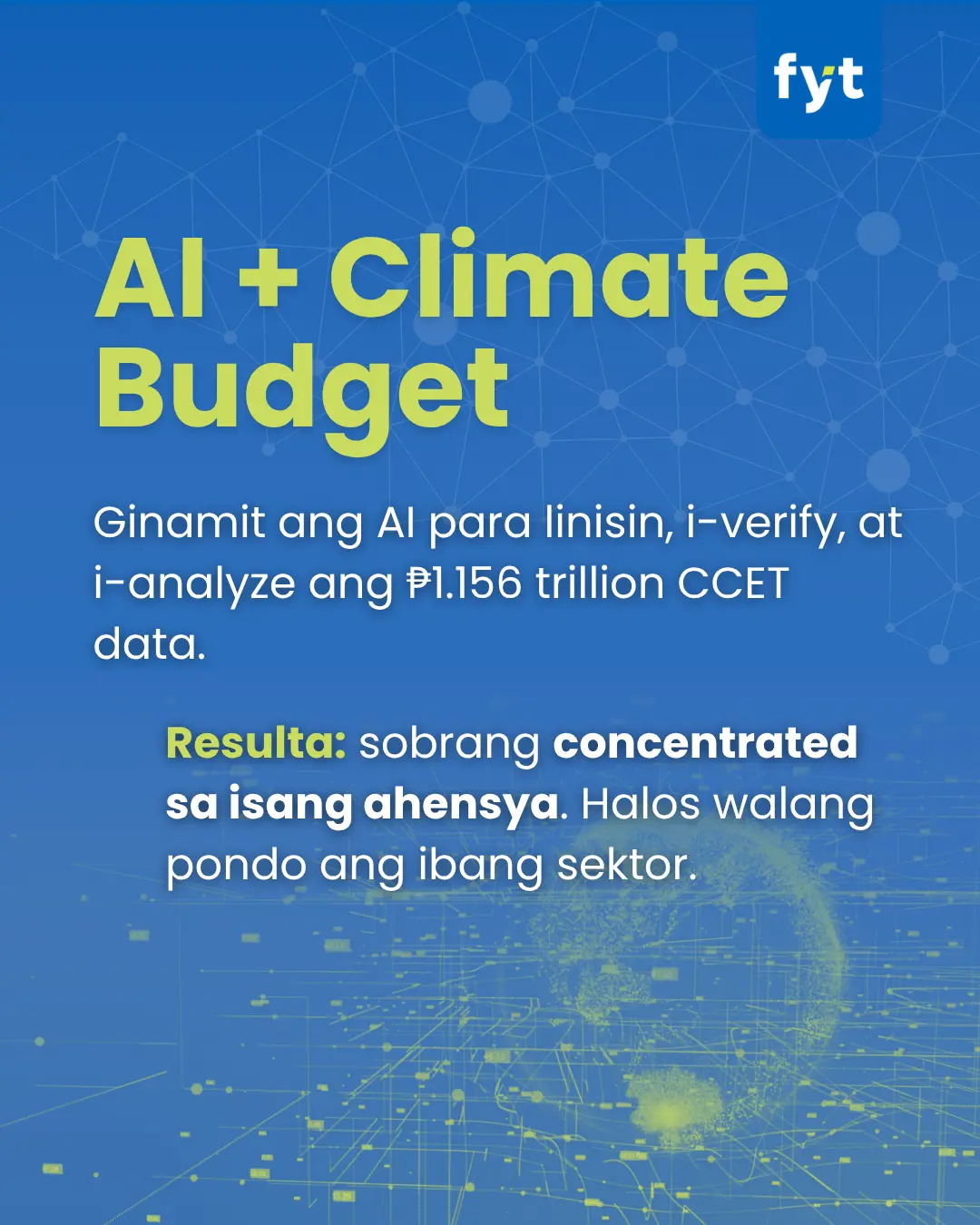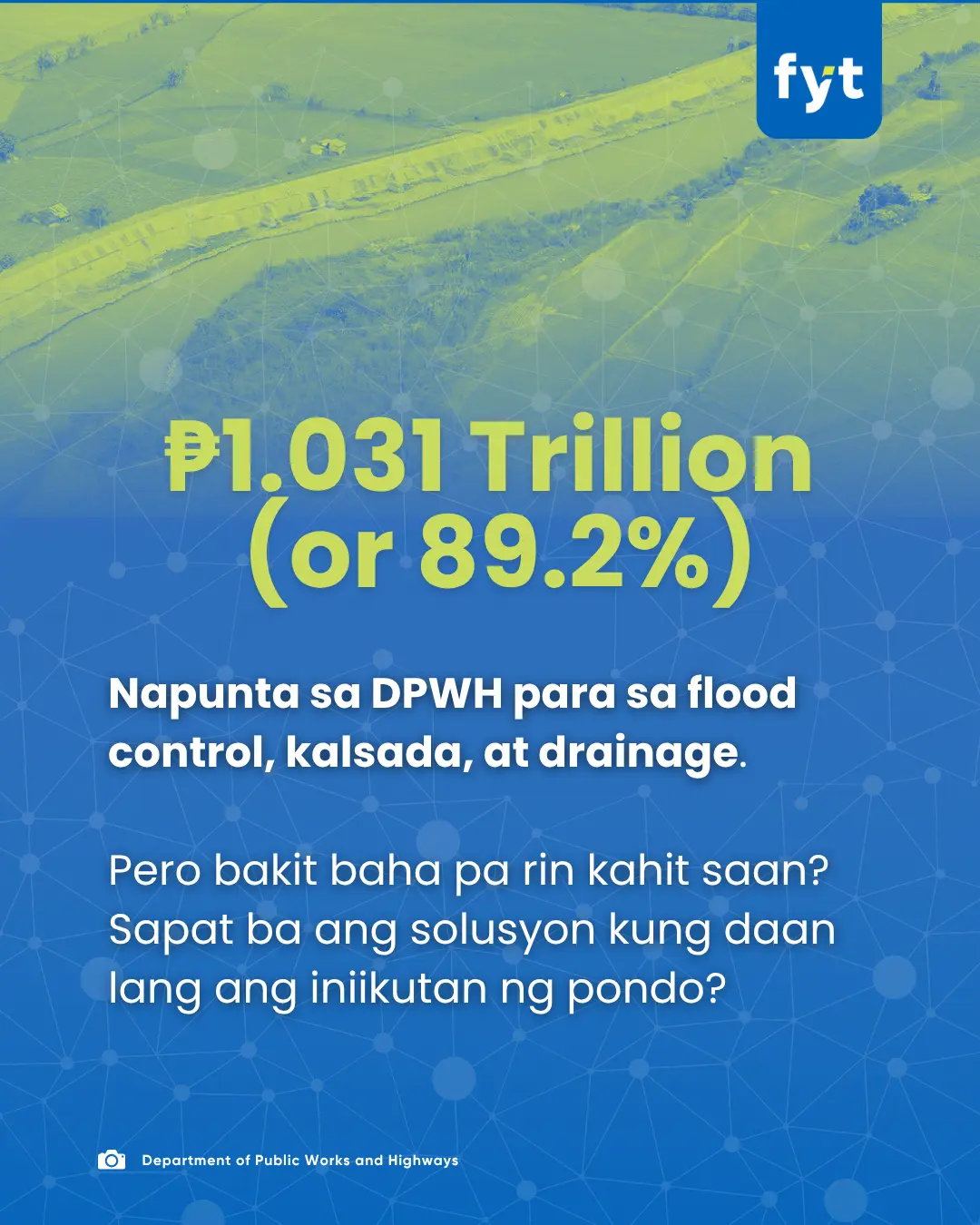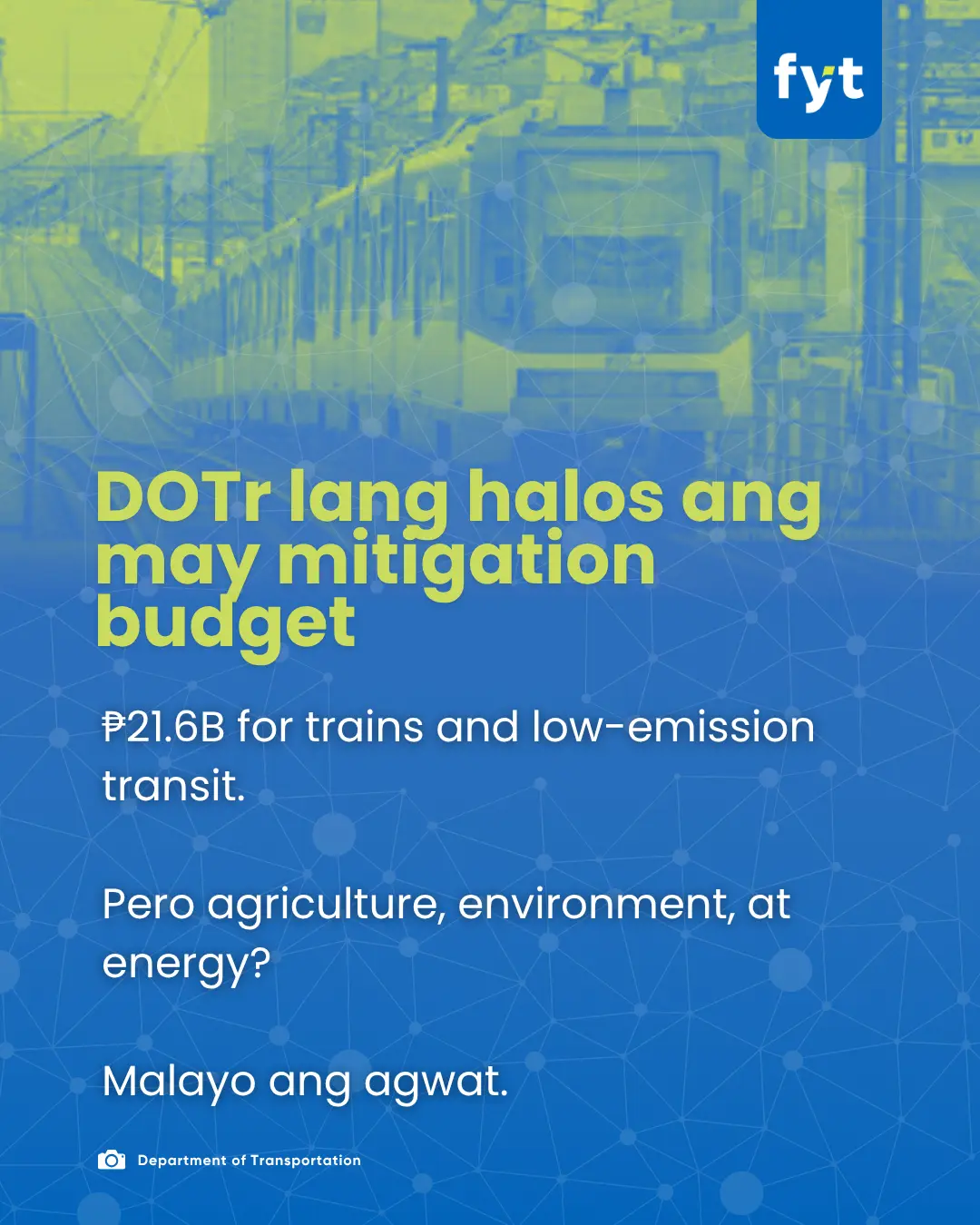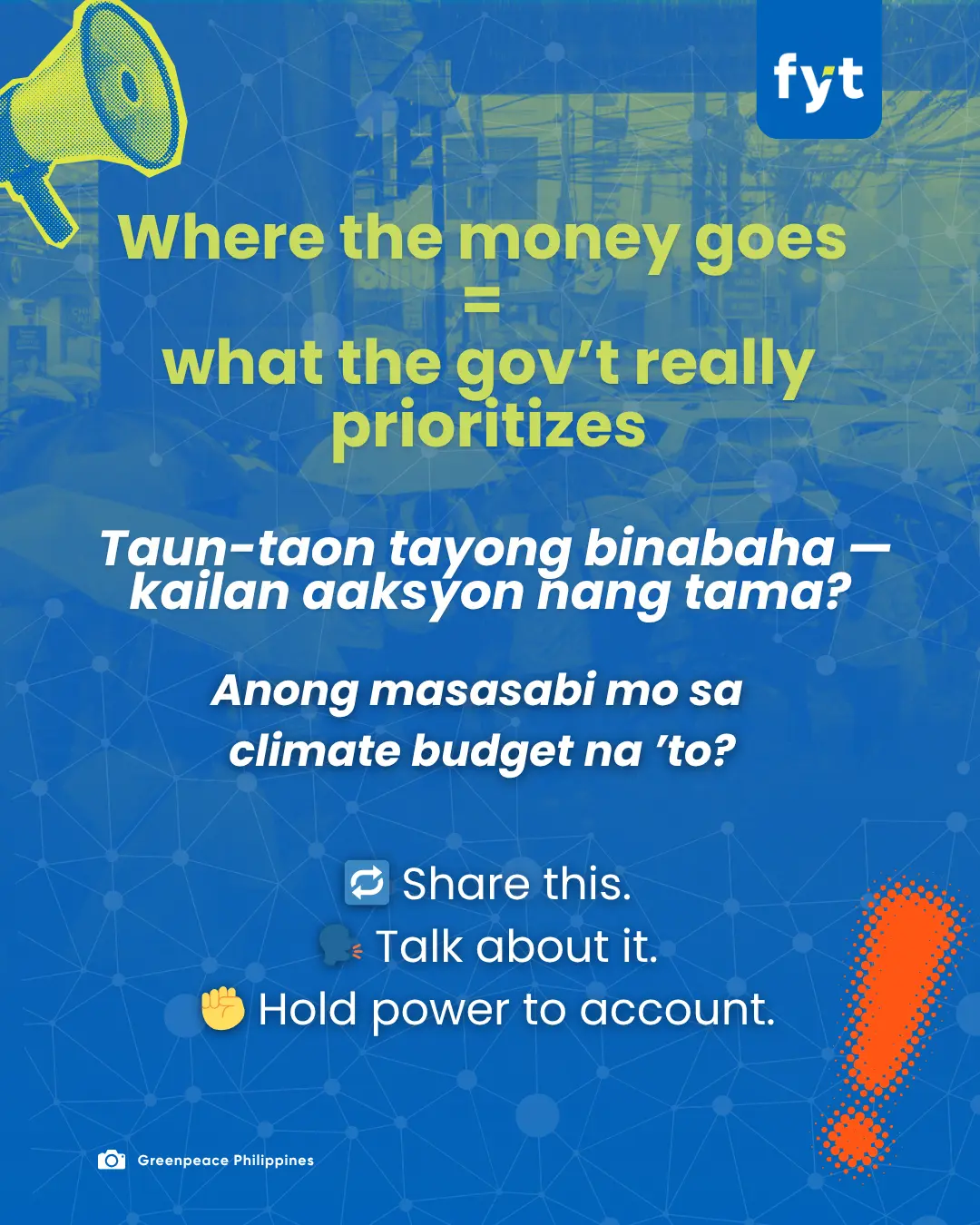
QUEZON CITY, Philippines – Every year, as typhoons batter the Philippines, Filipinos show the same resilience we're known for: evacuating early, helping neighbors, rebuilding homes.
But with the climate crisis getting worse, disasters are more intense and we can't just rely on spirit alone.
In 2025, the Philippine government tagged ₱1.156 trillion in public funds for climate action, a record-breaking amount. That sounds great on paper. But what if we told you that almost 90% of that budget went to just one agency? And that most of the money is being spent to react, not prevent?

The government tracks climate spending through something called Climate Change Expenditure Tagging (CCET). It's a system led by the Climate Change Commission (CCC) and the Department of Budget and Management (DBM), designed to make climate-related spending traceable, transparent, and accountable.
Under CCET, government programs are labeled either as:
Despite the availability of CCET Data, there hasn't been any deep examination into how that money is being allocated. We used AI to help us inspect the country's climate budget for 2025. The process began with using AI for helping clean and prepare the data, before using AI tools to help surface insights. At every step, the data and the insights were verified by humans to ensure its accuracy.
Here are some things we found.

The Department of Public Works and Highways (DPWH) had a total allocation ₱1.031 trillion, accounting for approximately 89.2% of all climate-related appropriations. The overwhelming majority of this funding is dedicated to infrastructure resilience, particularly roads, flood control, and drainage systems. However, these also include construction and retrofitting of other infrastructure including airports, seaports, buildings, schoolhouses, and covered courts:
The extreme concentration of funds in DPWH should also raise concerns about transparency and accountability, especially since the agency has a documented history of corruption issues in infrastructure spending.

Of the total climate expenditure, 97.2% (₱1.123 trillion) is allocated toward adaptation measures, highlighting a predominant focus on responding to immediate climate risks, such as typhoons, floods, drought, and agricultural impacts.
Mitigation (measures intended to reduce greenhouse gas emissions) accounts for only 2.8% (₱32.6 billion), suggesting a comparatively weak commitment to long-term emission-reduction strategies.
Among departments, the Department of Transportation (DOTr) stands out as nearly the sole significant contributor to mitigation funding, controlling approximately ₱21.6 billion or two-thirds of total mitigation funding.
Other departments and units don't receive nearly as much support:
Beyond DPWH (89.2%), only four other entities (Department of Agriculture, Department of Transportation, Budgetary Support to Government Corporations, and Department of Environment and Natural Resources) represent meaningful allocations, collectively capturing approximately 9% of the total climate budget.
The remaining 24 national agencies combined represent just 2% of tagged funds, highlighting either under-tagging of climate-relevant initiatives or minimal departmental prioritization of climate actions.
Critical social infrastructure departments such as Health, Education, and Social Welfare have negligible climate-tagged budgets, despite their vulnerability and importance during climate-related disasters.

The Department of Agriculture, despite receiving ₱48.7 billion, directs almost all funds towards adaptation (approximately 95%), suggesting limited emphasis on emission reduction strategies in agriculture, such as methane management and sustainable land use practices.
The Department of Environment and Natural Resources (DENR), despite its central role in climate mitigation and adaptation via reforestation, conservation, and ecosystem restoration, manages only ₱10.8 billion, less than 1% of the total climate budget. This limited funding indicates potential underinvestment in nature-based solutions and ecosystem resilience.
Surprisingly, the energy sector — responsible for a major share of national emissions — received only ₱1.05 billion in climate-tagged funding in 2025, or just 0.09% of the total climate budget. This minimal allocation reveals a significant policy gap, particularly in areas like renewable energy, energy efficiency, and power sector decarbonization.
Despite the headline figure of more than a trillion pesos, the climate budget’s composition reflects long-standing bureaucratic biases, remaining heavily skewed toward infrastructure while leaving critical sectors like energy, health, and agriculture with limited support. If the government aims to lead an effective climate response, it must go beyond infrastructure and embed climate strategies into the full range of national development efforts.
The minimal allocation for mitigation further highlights a profound gap in long-term planning and strategic investment, undermining commitments toward global climate goals and emissions reduction targets. Such an imbalanced allocation risks limiting national preparedness, weakening social and ecological resilience, and leaving crucial economic sectors inadequately equipped for inevitable climate disruptions.

With the Philippines among the countries most at-risk in the climate crisis, we need to ensure that every climate peso delivers measurable impact across sectors, timelines, and communities. — fyt.ph
Jaemark Tordecilla is a journalist, media advisor, and technologist specializing in AI and newsroom innovation. A 2024 Nieman Fellow at Harvard and board member of the nonprofit media outfit Fyt Media, he has led AI and digital strategy workshops for newsrooms worldwide and currently serves as editor at large at PumaPodcast.